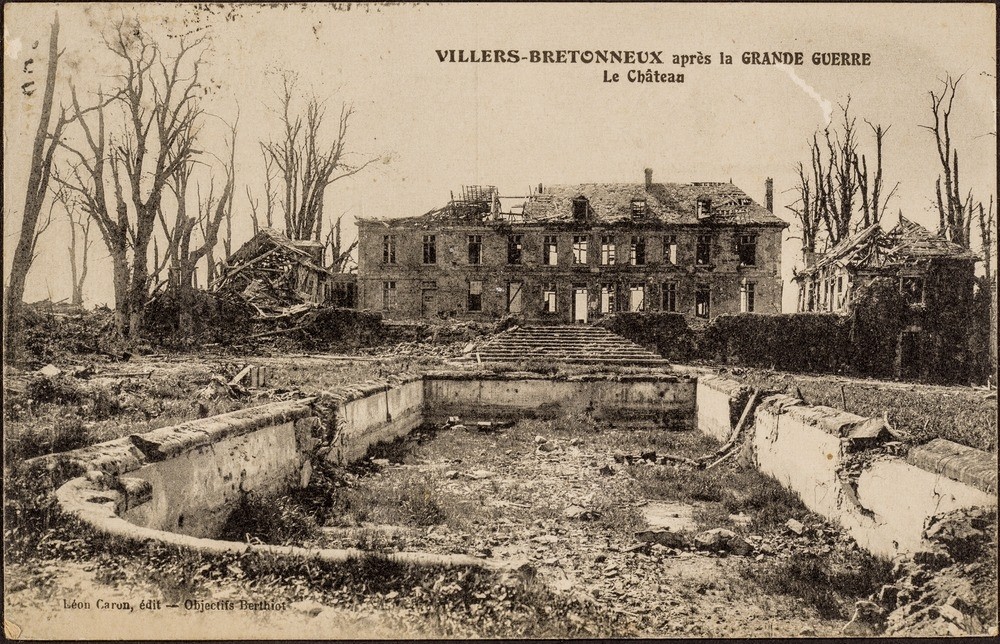
In gathering together on Anzac Day this year to acknowledge the service and sacrifice of those who fought and died for our country, we also commemorate the 100th anniversary of the Second Battle of Villers-Bretonneux, which took place from 24 to 25 April 1918 as part of the German Spring Offensive. This operation saw the first major use of tanks by German forces, which captured Villers-Bretonneux (near Amiens) from depleted British defenders on 24 April 1918.
A strategic and well-coordinated night attack by the A.I.F.'s 13th Infantry Brigade under the command of Queenslander General William Glasgow, and the 15th Infantry Brigade under the command of General H. E. 'Pompey' Elliott, successfully recaptured the town. The Australians pushed the German line back, leaving German troops in Villers-Bretonneux surrounded. British units attacked from the front and by 25 April the town had been handed back to the villagers. The battle was a great success for the Australian troops, and the village remained in Allied hands to the end of the war.
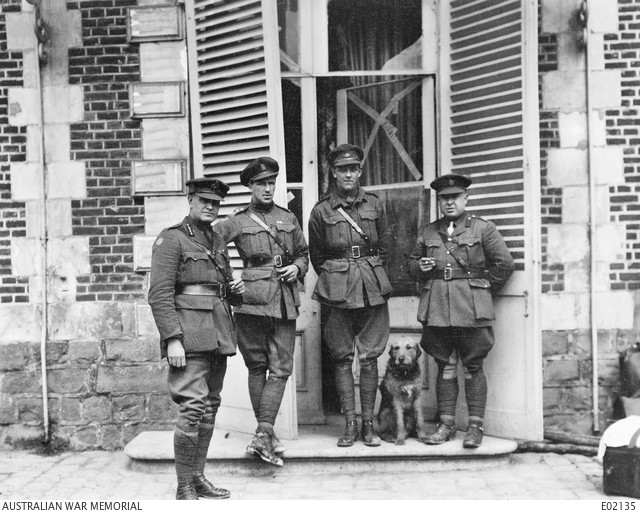
State Library holds the 29571 Sir T. William Glasgow and Lady Glasgow Papers 1894-1955 which contain almost 1,000 letters from General Glasgow to his wife Belle, who traveled to London to be closer to him, and their two daughters Beth and Joan back in Queensland. Several letters allude to the re-capture of Villers Bretonneux.
In a letter from Glasgow to his wife dated 25 April 1918, he mentions the battle:
'your countrymen never fought better & if there were 20 Divs of them & sufficient reinforcements to keep them going & we had sufficient other divs to hold the line the bosche could have his 200 divs, they would not avail him much'.
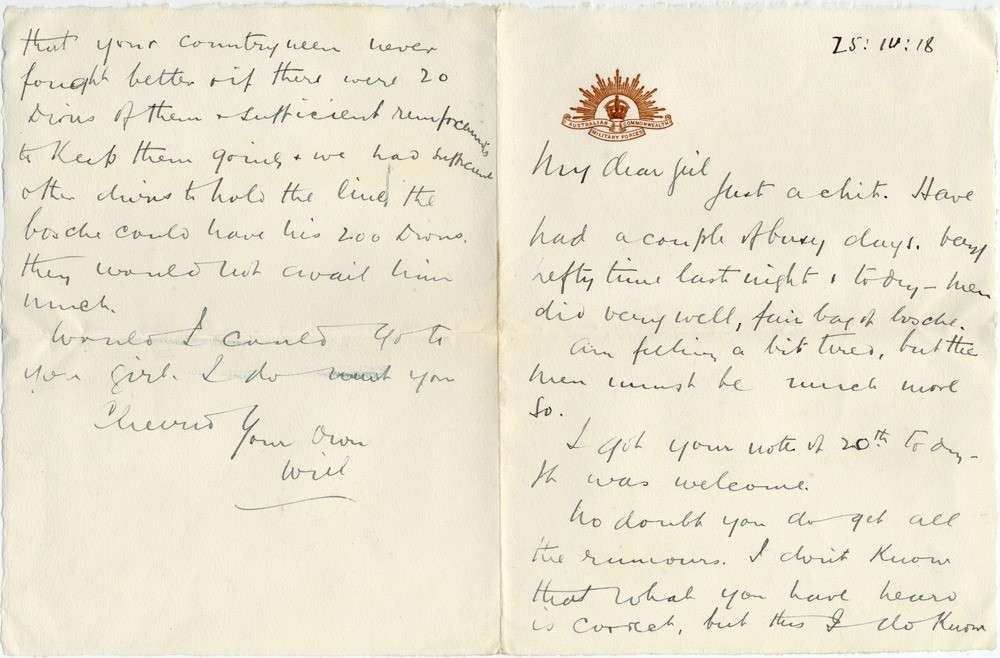
and in another letter dated the following day (Acc. 29571/640) he describes the ongoing activity to secure Villers-Bretonneux as 'hefty work'.
General Glasgow wrote every couple of days to his wife Belle, and his letter dated 29 April 1918 was written on the back of a typewritten account from the 28 April edition of the London Observer, regarding the recapture of Villers-Bretonneux and the heroic part played by the Australian troops. Glasgow wrote that the account below 'is not exaggerated':
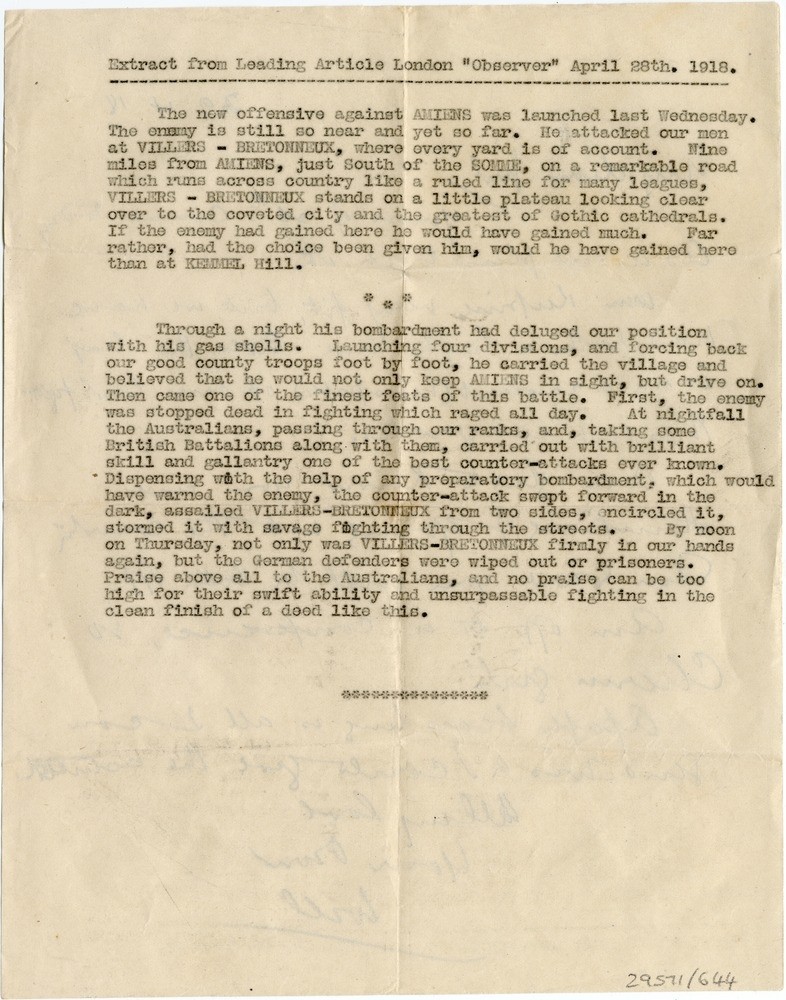
'Praise above all for the Australians, and no praise can be too high for their swift ability and unsurpassable fighting in the clean finish of a deed like this.'
In his letter dated 12 May 1918, Glasgow again mentions the action at Villers-Bretonneux, praises his troops and refers to his strategy to stage the attack at night:
'Yes we had rather a hefty time on 24th. It was really a tough job & some of the Gens. imagined we would not manage it, but the men were really wonderful. It was the anniversary
of the Landing. They wanted me to do it in daylight, but I would not, am afraid my losses would have been heavier.'
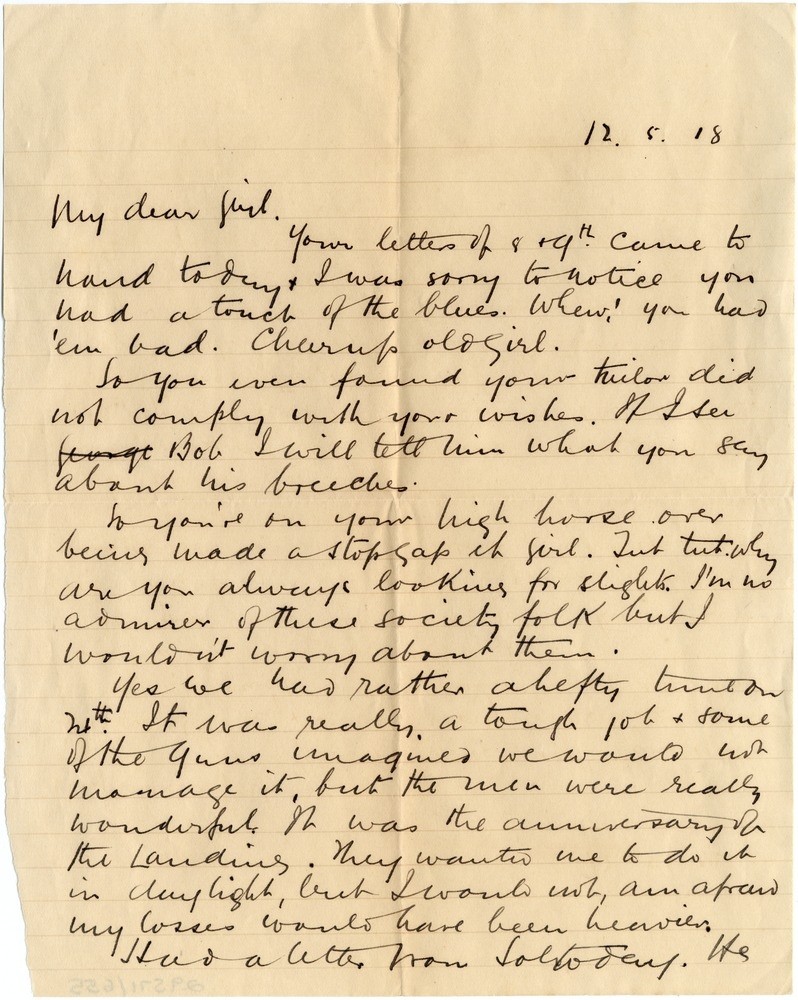
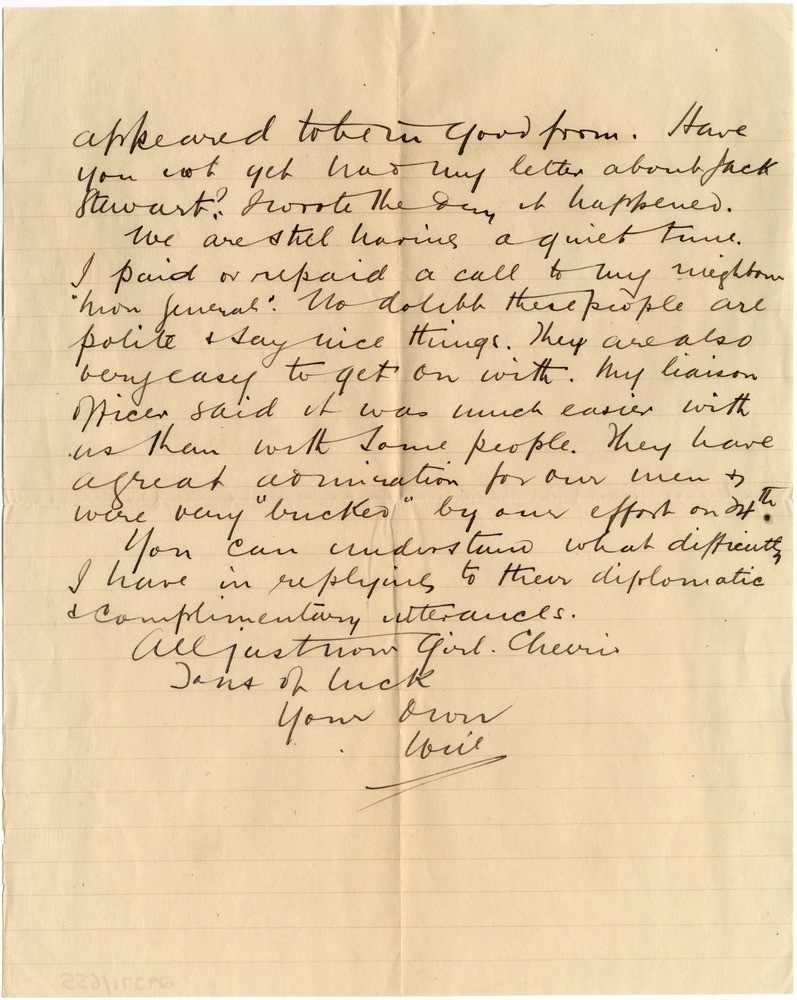
Praise for his troops continues in a letter to Belle dated 27 July 1918. He writes:
'Please girl don't imagine that too much of the credit of V.B. was due to me. It was really a most gallant bit of the work on the part of the men and young officers and as such should rank with the best performance on the Western Front'.
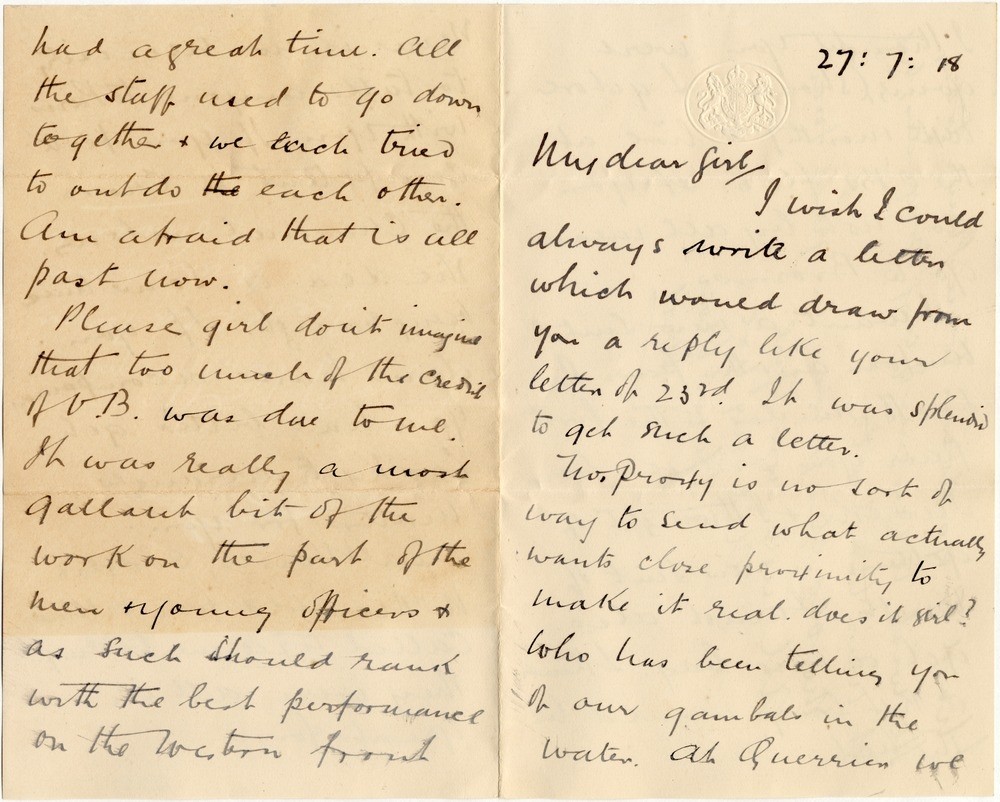
Another account of the Villers-Bretonneux recapture can be found in the collection of Townsville-born journalist George Goddard, who served with 59th Infantry Battalion and participated as part of 15th Brigade. In a letter to his mother dated 28 April 1918, Goddard wrote:
'We are still in the place from which I last wrote you, & there have been a whole lot of lively times since then. In Expectation of a Hun attack, we were continually standing to arms. On the morning of the 24th it came, & the wily Bosche captured the village which was the objective of his attack, driving back the Tommies. However, he didn’t have it long, for our Brigade were sent in at 10 o/clock that night to counter attack. What a victory it was! The papers haven’t finished talking about it yet. It was the most complete reversal that one could imagine for the Hun. He had all day to consolidate his defences of the village and had brought up loads of machine guns and light field guns & trench mortars. Our fellows got in among them before they knew where they were, and just gave them one of the best beatings they ever had. 500 prisoners, & between 70 & 80 machine guns were captured by our Brigade alone..... It has since been described as a masterpiece of strategy. The place was completely surrounded & the Hun’s retreat was cut off. There must have been two killed for every one captured; so you see the victory was complete. Our own casualties in the actual operation were very light – not one fourth of the number of prisoners taken. Charlie Bean came along to our Headquarters on the following day & I had quite a long yarn with him.'
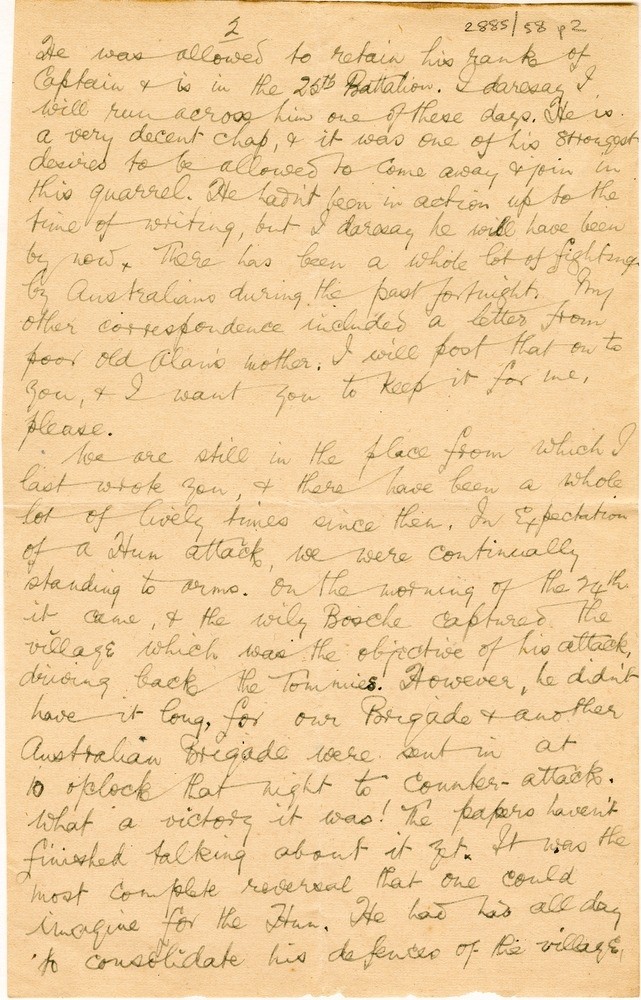
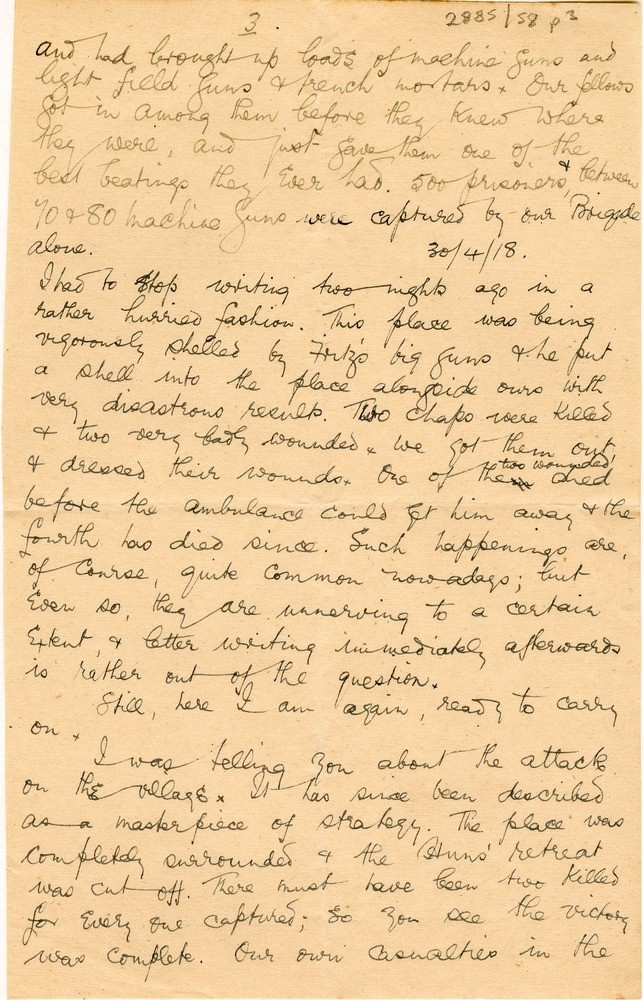
Perhaps the best account of the re-capture might be General Glasgow's own spoken recollections. The 29571 Sir T. William Glasgow and Lady Glasgow Papers 1894-1955 also contain an Australian Broadcasting Commission recording made for an Australian War Memorial project to capture on gramophone records the voices and First World War recollections of various outstanding officers of the A.I.F. Included is the recollection of Sir William Glasgow (Acc. 29571/1291) in which he recounts the pivotal part played by the 13th Brigade in the counter-attack on Villers-Bretonneux, France, in April 1918.
Robyn Hamilton - Coordinator, QANZAC100 Content, State Library of Queensland
Comments
Your email address will not be published.
We welcome relevant, respectful comments.